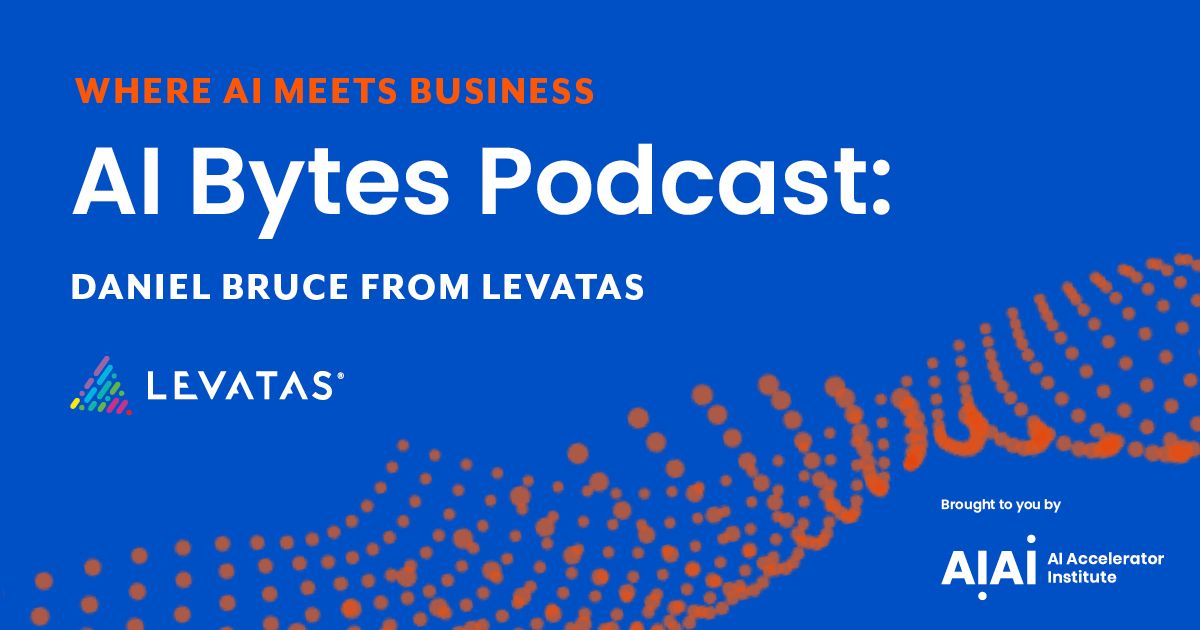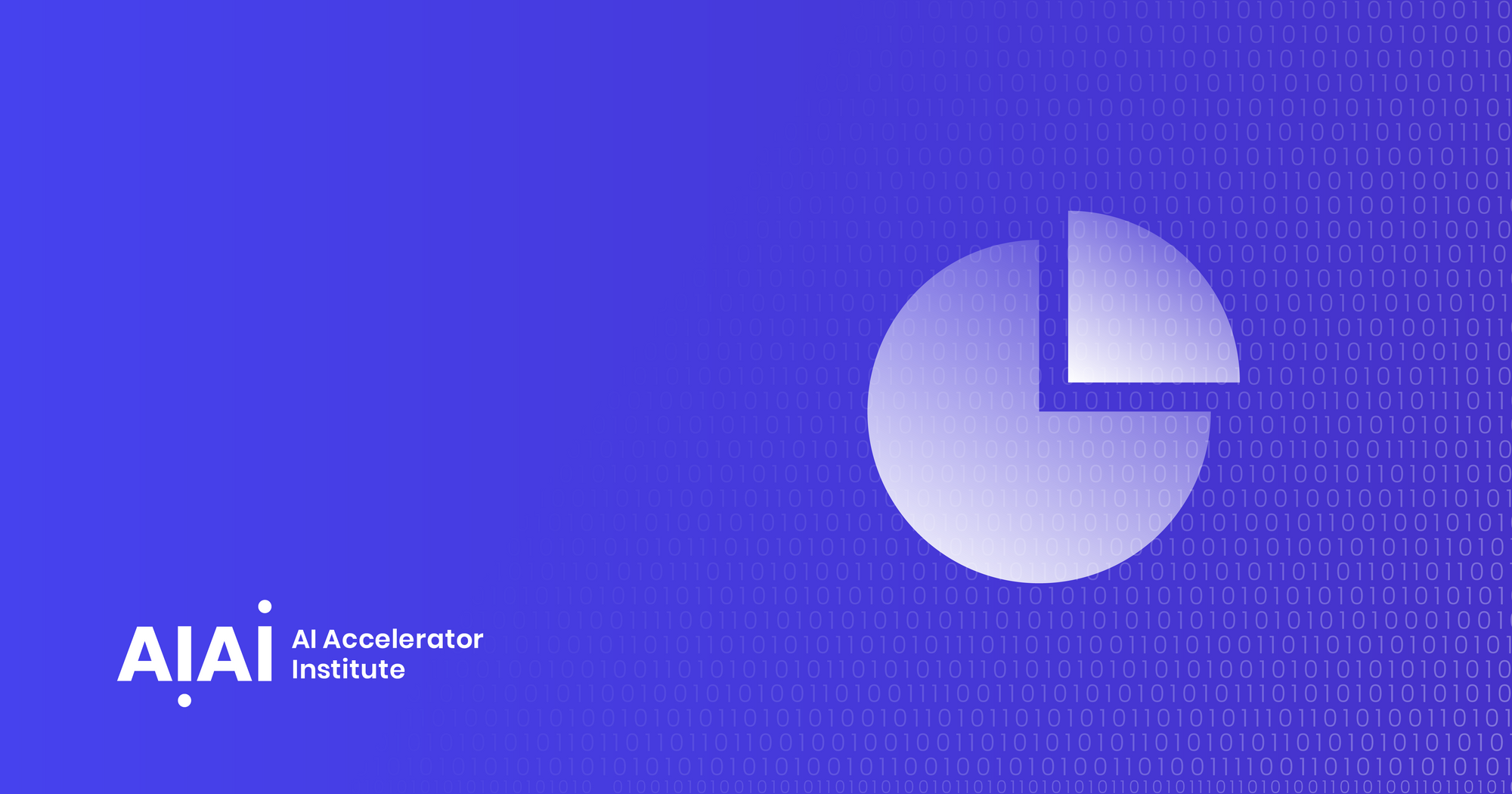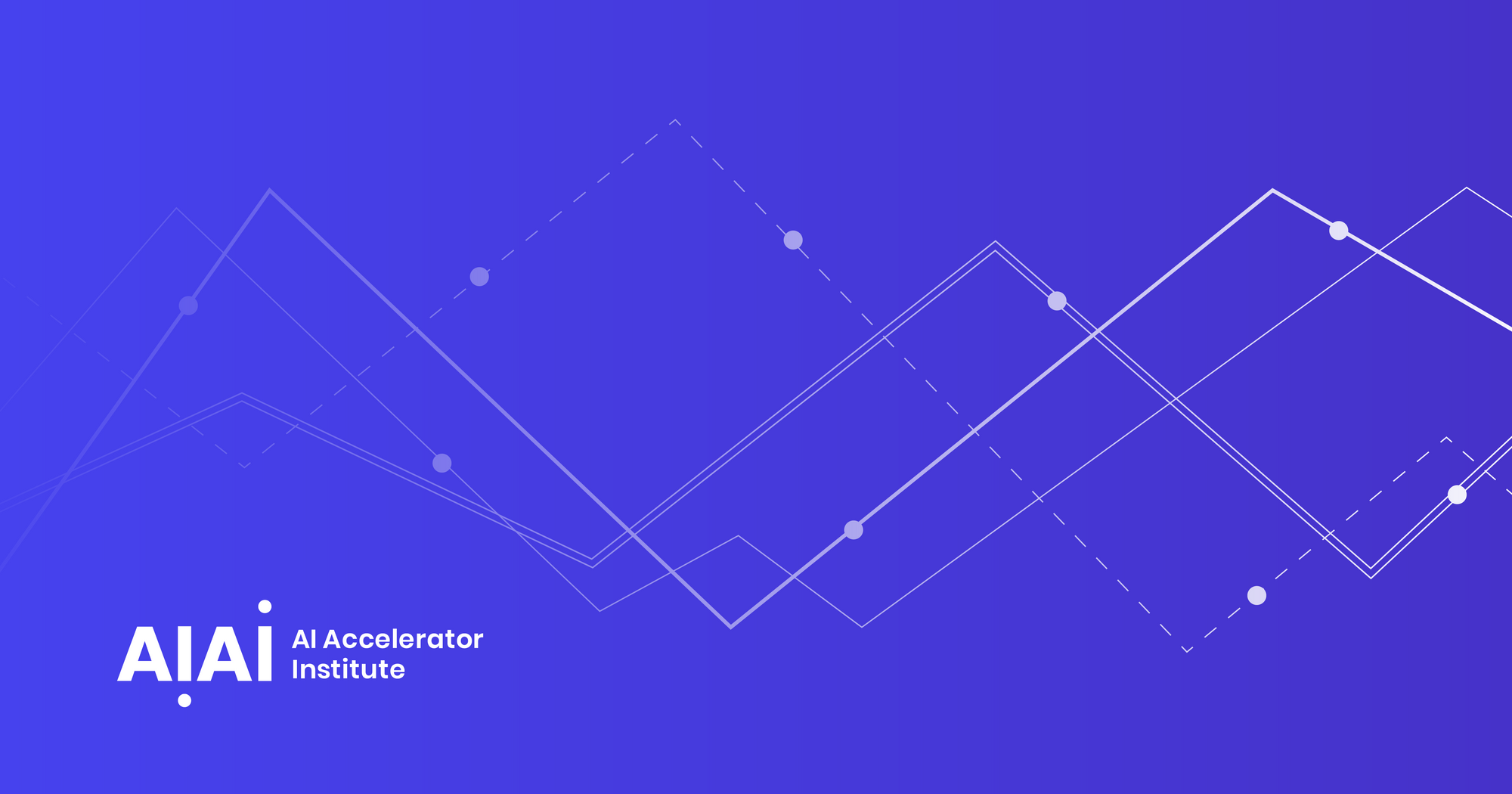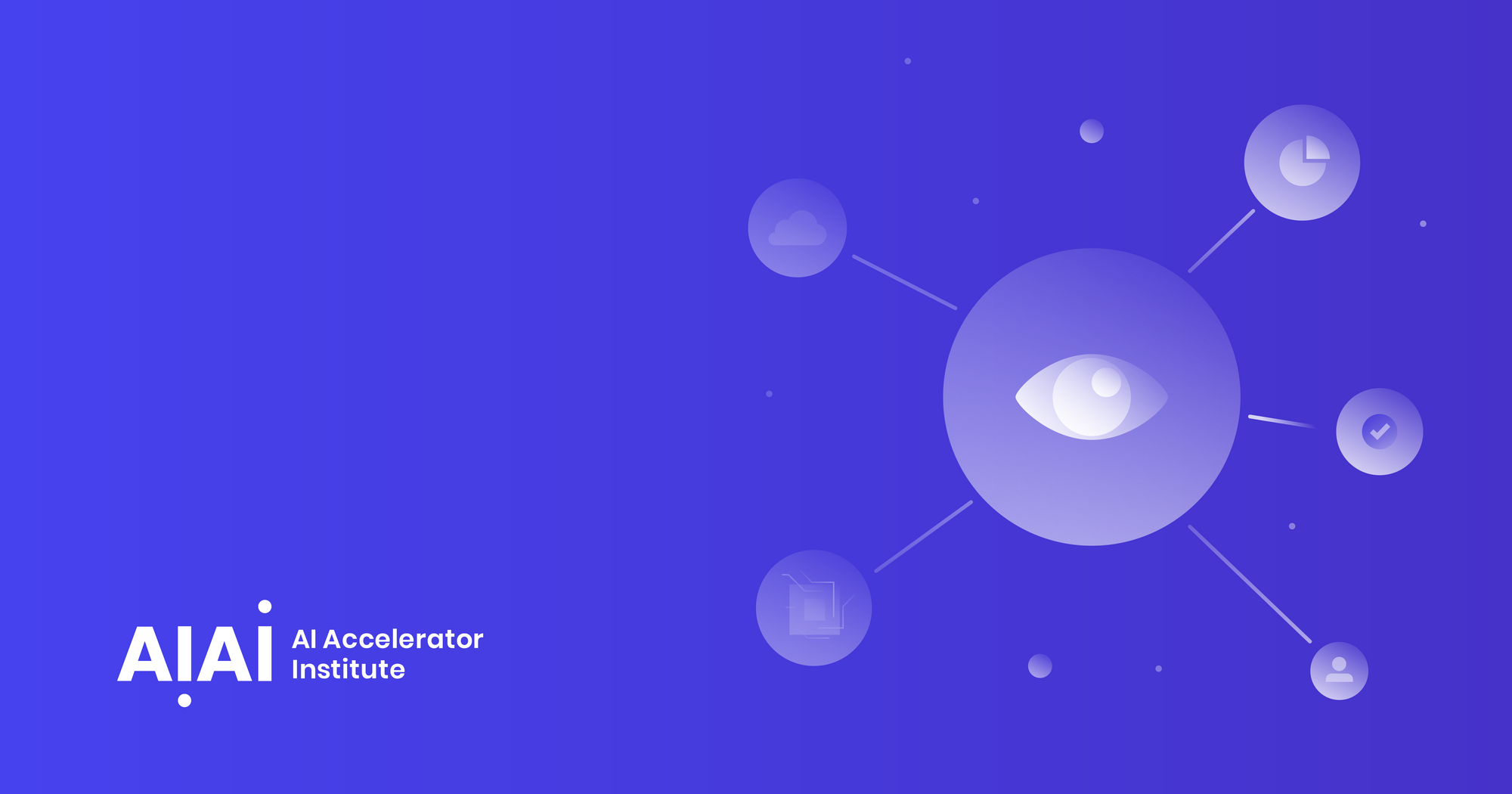Artificial intelligence (AI) helps to build smart machines that can perform a variety of tasks that would otherwise require human intelligence. Alan Turing famously proposed, 'Can machines think?', spurring decades of debate into the definition of consciousness. AI is the branch of computer science that aims to answer Turing's question, with a resounding 'yes'.
This interdisciplinary science uses machine learning and deep learning to create specialized solutions for practically every sector of the tech industry - and a few others. Stuart Russell and Peter Norvig, authors of the textbook Artificial Intelligence: A Modern Approach, unify their work around the idea of intelligent agents in machines, stating that AI is “the study of agents that receive percepts from the environment and perform actions”.
The authors also add that there have been four different approaches that have defined AI: thinking humanely, thinking rationally, acting humanely, and acting rationally. Dealing with thought processes, reasoning, and behavior, these ideas are based on the fact that, to Russell and Norvig, “all skills needed for the Turing Test also allow an agent to act rationally”.
In this guide, we’ll cover:
How does artificial intelligence work?
AI systems work by receiving large amounts of training data, analyzing that data for patterns and correlations, and using these patterns in order to make predictions. AI programming has a focus on three main cognitive skills, which are learning, reasoning, and self-correction.
1. Learning processes
Acquiring data and creating specific rules for how the data is turned into actionable information. These rules, or algorithms, give computer devices step-by-step instructions for how they need to complete a task.
2. Reasoning processes
Focusing on choosing the right set of rules, or algorithms, to reach the desired result.
3. Self-correction processes
Made to continuously fine-tune algorithms and ensure that they offer the most accurate results.
Strong AI vs weak AI
Artificial intelligence can be divided into weak or strong AI. Weak AI, or narrow AI, is a system created and trained for specific tasks. Apple’s Siri, for example, uses weak AI.
Strong AI, or Artificial General Intelligence (AGI), relates to programming that can copy a human brain’s cognitive abilities. When faced with an unfamiliar task, these systems can use fuzzy logic to use knowledge from one domain to another, and autonomously find a solution. An AGI should be able to pass the Turing Test.
Learn more about augmenting human intelligence by listening to the AI Bytes podcast episode with Daniel Bruce, hosted by Ashok Ramani.

A brief history of artificial intelligence
The idea of inanimate objects having intelligence of their own has been around for millennia. In the Greek myths, the god Hephaestus was depicted forging robot-like servants out of gold, and philosophers throughout the ages described human thought processes as symbols, which helped to pave the way for the concepts of AI.
1836: Charles Babbage, a Cambridge University mathematician, and Augusta Ada Byron, Countess of Lovelace, invented the first design for a programmable machine.
1940s: Jon Von Neumann, a Princeton mathematician, created the architecture for a stored-program computer - the concept that a computer’s program and processed data could reside inside the computer’s memory. Warren McCulloch and Walter Pitts paved the way for neural networks when they published A Logical Calculus of Ideas Immanent in Nervous Activity, which proposed the first mathematical model to create a neural network.
1950s: Alan Turing, British mathematician, and World War II ENIGMA code-breaker, publishes Computing Machinery and Intelligence. Introducing the Turing Test - a test that focuses on a computer’s ability to fool people into thinking its answers to questions were made by humans.
1956: The first-ever AI conference, sponsored by the Defense Advanced Research Projects Agency (DARPA), is held at Dartmouth College, with John McCarthy coining the term ‘artificial intelligence’. Computer scientist Allan Newell, and Herbert A. Simon, an economist, cognitive psychologist, and political scientist, also attended, presenting their Logic Theorist, a groundbreaking computer that could prove certain mathematical theorems and is considered to be the first AI program.
Late 1950s: Allen Newell and Herbert A. Simon publish the General Problem Solver algorithm, which fails to solve complex problems but paves the way for more sophisticated cognitive architectures. John McCarthy developed Lips, a language for AI programming that is still used in present times.
Mid-1960s: Joseph Weizenbaum, Professor at MIT, developed ELIZA, a natural language processing program that paved the way for modern chatbots.
1967: Frank Rosenblatt builds the first computer based on a neural network that’s capable of ‘learning’ through trial and error - the Mark 1 Perceptron.
1968: Marvin Minsky and Seymour Papert publish Perceptrons, a book that quickly becomes landmark work for neural networks and an argument against future research projects about neural networks.
1974-1980: The first ‘AI Winter’, in which government and businesses stop their support of AI research.
1980s: Edward Feigenbaum's expert systems and deep learning research start a new wave of AI excitement. Neural networks using a backpropagation algorithm that trains itself start being used in AI applications. Government funding and industry support die down again, and a second ‘AI Winter’ happens until the mid-1990s.
Want to know more about deep learning? Read our guide below:

1997: IBM’s Deep Blue beats Garry Kasparov, the then chess champion in both a match and a rematch.
2011: IBM Watson beats champions Brad Rutter and Ken Jennings at Jeopardy!.
2015: Baidu’s Minwa supercomputer using a special type of deep neural network, a convolutional neural network, identifies and categorizes images with a much higher degree of accuracy than the average human.
2016: DeepMind's AlphaGo beats Lee Sodol, the Go world champion player, in a five-game match.

The four types of artificial intelligence
Arend Hitze, a Michigan State University assistant professor of Integrative Biology and Computer Science and Engineering, wrote in an article that AI can be categorized into four different types. These are:
1. Reactive machines
The types of AI machines are the most basic and can only react to their environment. They can’t form memories or use past experiences to inform current and future decisions, only directly perceiving the world and acting on what they see.
They complete only a limited number of very specific tasks, which narrows their worldview. This means that reactive machines are more trustworthy and reliable, however, they always react the same way to the same stimuli.
Examples of reactive machines are:
Google’s AlphaGo
Developed by DeepMind Technologies, a Google subsidiary, AlphaGo is a computer program that not only plays Go but is also the first computer program to defeat a professional human Go player and Go world champion.
Go, or Weiqi, is an abstract strategy board game in which two people play against each other and try to win by surrounding more territory than their opponent. Invented in China over 3,000 years ago, Go is thought to be the oldest board game continuously played until present day.
The complexity of the game made it a challenge for artificial intelligence. With a 10 to the power of 170 possible board configurations - which is more than the number of atoms in the known universe - even the strongest Go computer programs could just play at an amateur human level.
AlphaGo combines advanced search trees with deep neural networks. The neural networks then take a description of the board as an input and process it through various different network layers that have millions of neuron-like connections.
The ‘policy network’ within the neural networks chooses the next move to play while the ‘value network’ predicts who’ll win the game. After AlphaGo was introduced to various amateur games, it then played against different versions of itself thousands of times to learn from its mistakes. It went on to win 5-0 against a Go professional in 2015.
AlphaZero, launched in 207, is a self-taught single system that has mastered Go, chess, and shogi, beating world-champion computer programs in each game. This version replaces hand-crafted heuristics with algorithms and a deep neural network, resulting in a unique and creative style of playing.
MuZero, the newest iteration, learns a model of its environment and combines it with AlphaZero’s lookahead tree search. This allows MuZero not only to perform at Go, chess, and shogi, but also to master various visually complex Atari games without being told any rules of the games. MuZero can also plan winning strategies in unknown domains, which is important for the future building of general-purpose learning systems.
IBM’s Deep Blue
In 1985, Feng-hsiung Hsu, a graduate student at Carnegie Mellon University, worked on his dissertation project featuring a chess-playing machine called ChipTest, with classmate Murray Campbell. When both were hired by IBM in 1989, they continued their work alongside computer scientists Joe Hoane, Jerry Brody, and C. J. Tan. The team then named the project Deep Blue.
Playing against world champion Garry Kasparov for the first time in 1996, the six-game match went in Kasparov’s favor 4-2. After Deep Blue’s upgrade in 1997, the rematch went in its favor 2-1; Kasparov won the first game, Deep Blue won the second, with the following three games a tie, and the last game won by Deep Blue.
The machine could explore up to 200 million possible positions every second, and its impact was felt throughout many industries. As it was programmed to solve complex and strategic problems in chess, it also allowed researchers to explore and understand the limits of massively parallel processing.
Deep Blue’s architecture was applied to molecular dynamics (helpful in discovering and developing new drugs), financial modeling (like marketplace trends and risk analysis), and data mining (discovering hidden relationships and patterns in large databases).
Inspired by Deep Blue, IBM’s Watson went against two of the most successful human players of Jeopardy! in 2011 - and won. This machine had software that could process and reason about natural language. It then relied on the massive supply of information it received before the competition. Watson showed that human-machine interactions could be even more advanced.
2. Limited memory
Limited memory machines can look into the past. They can store previous data and predictions when they gather information and then weigh potential decisions. These machines are more complex than reactive ones, being created when a model is continuously trained in how to both analyze and use new data.
The following steps need to be followed when using limited memory AI machines in machine learning:
- Training data has to be created.
- The machine learning model has to be created.
- The machine learning model has to be able to make predictions.
- The machine learning model has to be able to receive environmental or human feedback.
- The feedback received needs to be stored as data.
- All of the previous steps have to be reiterated as a cycle.
Want to know more about machine learning? Read our guide below:

There are three main machine learning models that use limited memory AI machines:
- Evolutionary Generative Adversarial Networks (E-GAN). These evolve and grow over time, exploring slightly different paths with every new decision based on past experiences. This machine learning model is continuously looking to achieve better paths, using simulations and statistics to predict outcomes based on its eb=volutionary mutation cycle.
- Long Short Term Memory (LSTM). These use past data to predict the next item in sequences. They view more recent information as more important as they make predictions, not accounting for older data although still using it to form conclusions.
- Reinforcement learning. These models use continuous trial-and-error to make better predictions.
Self-driving cars, for example, watch cars’ direction and speed by identifying objects and monitoring them over a period of time. Adding this data to self-driving cars’ pre-programmed representations of the environment, like traffic lights and curves on the road, self-driving cars can then make decisions on when to change lanes, for example.
This data about the past, however, is only short-term, and it isn’t saved in the library of experience that limited memory machines can learn from.
3. Theory of mind
This theoretical concept is the next level of artificial intelligence machines. Based on the psychological premise “theory of mind”, it will represent machines understanding that humans, animals, and objects can have thoughts and emotions affecting their own behavior.
Machines capable of this feat would also be able to understand how humans, animals, and other machines feel and make their own decisions through both determination and self-reflection. They would then use this data to make their own decisions.
Having the ability to understand the concept of “mind”, emotions, and other concepts will be essential - all in real-time.
4. Self-awareness
The final type of AI machine, it will develop a human level of consciousness and emotions. AI scientists will have to understand how consciousness works and how to replicate it in machines, so they can become aware of their own existence.
Although self-aware machines are likely still a good few years from being developed, the initial steps taken already in understanding learning, memory, and how to make decisions based on past experiences are essential and the first blocks into creating AI like we see in films and games nowadays.
These evolved machines would then inevitably bring discussions about what is to be human and aware: do they deserve the same status as humans? Games like Detroit: Become Human explore these concepts.
Applications of artificial intelligence
1. Computer vision
This field of study develops advanced techniques that help computers see and understand information from digital videos, images, and other visual inputs. Using complex neural networks, computer vision has applications in radiology imaging, e-commerce, and more.
Learn more about how eBay is powering their e-commerce platform with computer vision:

Or read more about what computer vision is below:

2. Speech recognition
Also known as automatic speech recognition, or ASR, it uses natural language processing to process human speech into text. Digital assistants like Google Assistant use natural language processing and machine learning to use human language effectively. They’re capable of understanding complex commands and offer satisfactory outputs.
But digital assistants can now do more than simply answer questions - they can now analyze user preferences, schedules, habits, and more to organize and plan reminders and schedules.
3. Recommendation engines
AI algorithms use past consumer behavior data to predict data trends in order to develop cross-selling techniques that are more effective. This is then used to make relevant add-on recommendations for consumers during their checkout process at online shops.
Spotify, Netflix, and YouTube, for example, are media streaming platforms that use an AI-powered smart recommendation system. After collecting user data on interests and behaviors, they use machine learning and deep learning algorithms to analyze the data and predict preferences.
4. Customer service
Replacing human employees in the customer journey, online chatbots are now answering frequently asked questions (or FAQs) or providing personalized advice and even cross-selling products. They’re changing the way businesses think about customer engagement in both social media platforms and websites, being used as messaging bots on e-commerce websites and in Facebook Messenger, for example.
5. Chatbots
Used in customer service, chatbots (or chat robots) impersonate human employees with conversational styles of customer representatives by using natural language processing (NLP). These chatbots can answer questions that need very detailed answers and even learn from bad reviews for maximum efficiency.
6. Face recognition technology
Apple’s TrueDepth camera projects more than 30,000 invisible dots to create a depth map of users’ faces, capturing an infrared image as well. A machine-learning algorithm then compares the face scan with facial data already enrolled, to know whether or not it can unlock the device.
According to Apple, their face recognition algorithm will automatically adapt to any changes to the users’ facial features, such as facial hair, makeup, or contact lenses.
7. Social media
Platforms like Instagram and Facebook use artificial intelligence to personalize what users see on their feeds, identifying interests to recommend similar content in order to keep them engaged. AI models are also trained to recognize certain keywords, symbols, or phrases in multiple languages to quickly remove posts with hate speech, for example.
AI in social media is also used through emojis in predictive text, smart filters that identify and remove spam messages, facial recognition that automatically tags users’ friends in photos, and smart replies for quick message responses.
8. Text editor
Document editors make use of natural language processing to identify incorrect grammar and to make suggestions. Some editor tools also have readability and plagiarism technologies. More advanced tools also offer smart web content optimization recommendations and even help drive traffic to websites by improving content relevance.
9. Search algorithm
Search algorithms like Google provide top results on the search engine result page (SERP) with relevant answers to users’ questions. Quality control algorithms are typically used to identify high-quality content and then offer a list of search results that answer queries and provide the best user experience. These search engines rely on natural language processing technology to understand questions.
10. Smart home devices
Smart thermostats use AI applications to understand daily habits and cooling and heating preferences to automatically adjust temperature. Similarly, smart fridges can create shopping lists based on what’s missing on the fridge shelves.



 Follow us on LinkedIn
Follow us on LinkedIn



